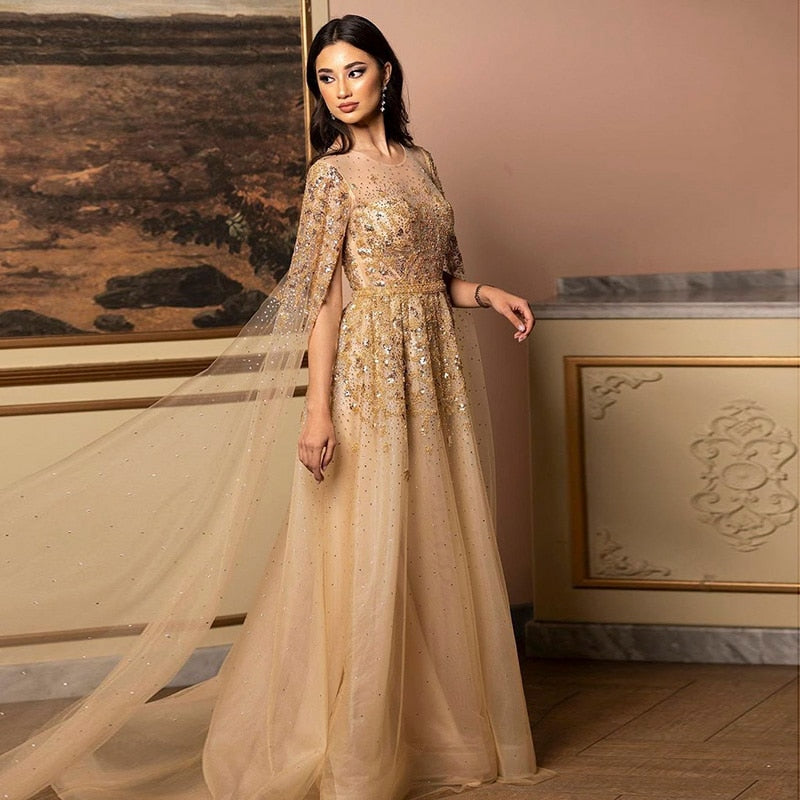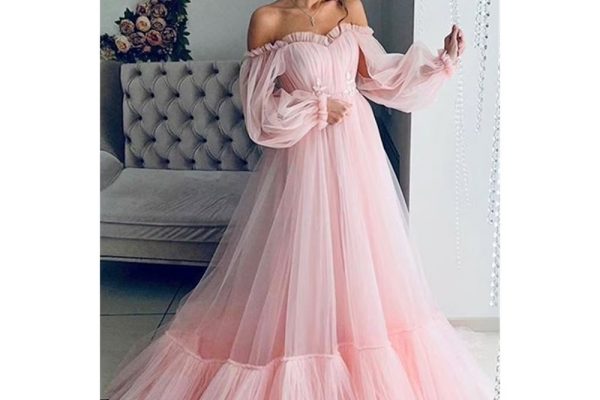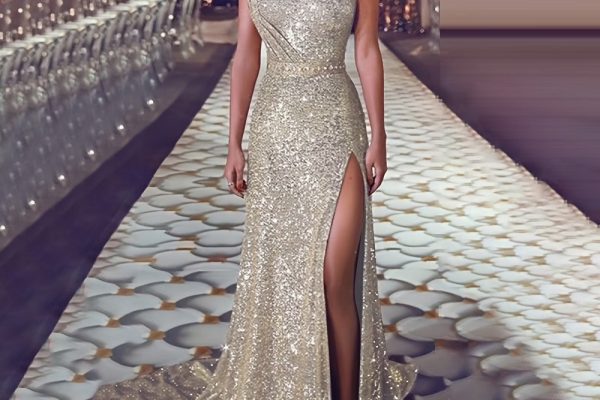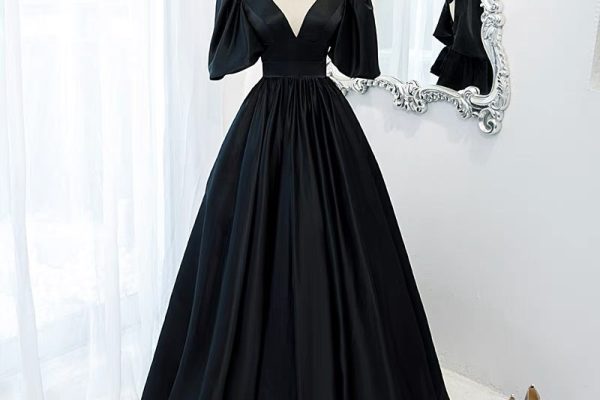When it comes to attending an elegant event, the right outfit can make all the difference in how you feel and how you are perceived. Among the myriad of colors and styles available, a gold formal dress stands out for its unique ability to convey luxury, sophistication, and confidence. Whether it’s a wedding, gala, or an upscale evening gathering, a gold dress can ensure you shine in any occasion. This comprehensive guide will explore the allure of gold formal dresses, how to choose the perfect one for your body type, accessorizing tips, and ways to ensure you feel comfortable and confident at your next elegant event.
The Allure of Gold Formal Dresses
Symbol of Elegance and Luxury
Gold is often associated with wealth, success, and opulence. Wearing a gold formal dress can make a powerful statement at any event. This color symbolizes warmth and invites admiration. Gold has a timeless charm that captures the eye and enhances one’s appearance, allowing the wearer to stand out effortlessly.
The appeal of gold is not limited to its color; it also encompasses its versatility. Gold dresses can range from deep, rich hues that evoke a vintage vibe to lighter, shimmering shades that evoke modern glamor. This adaptability makes gold suitable for various events, from sophisticated black-tie affairs to festive holiday parties. Such versatility ensures that anyone can incorporate a gold formal dress into their wardrobe.
Enhancing Personal Style
Every individual has their own style, and a gold formal dress can enhance and complement that unique identity. Depending on the cut, fabric, and design, a gold dress can communicate different vibes. For example, a fitted gold gown can convey a classic elegance, while a flowy, embellished dress can express a fun and whimsical personality.
Experimenting with different styles will allow you to find the perfect gold dress that resonates with your taste. By selecting elements that reflect personal style—such as lace details, sequins, or an elegant silhouette—wearers can create a balance between glamour and individuality. The possibilities are endless when it comes to styling a gold formal dress.
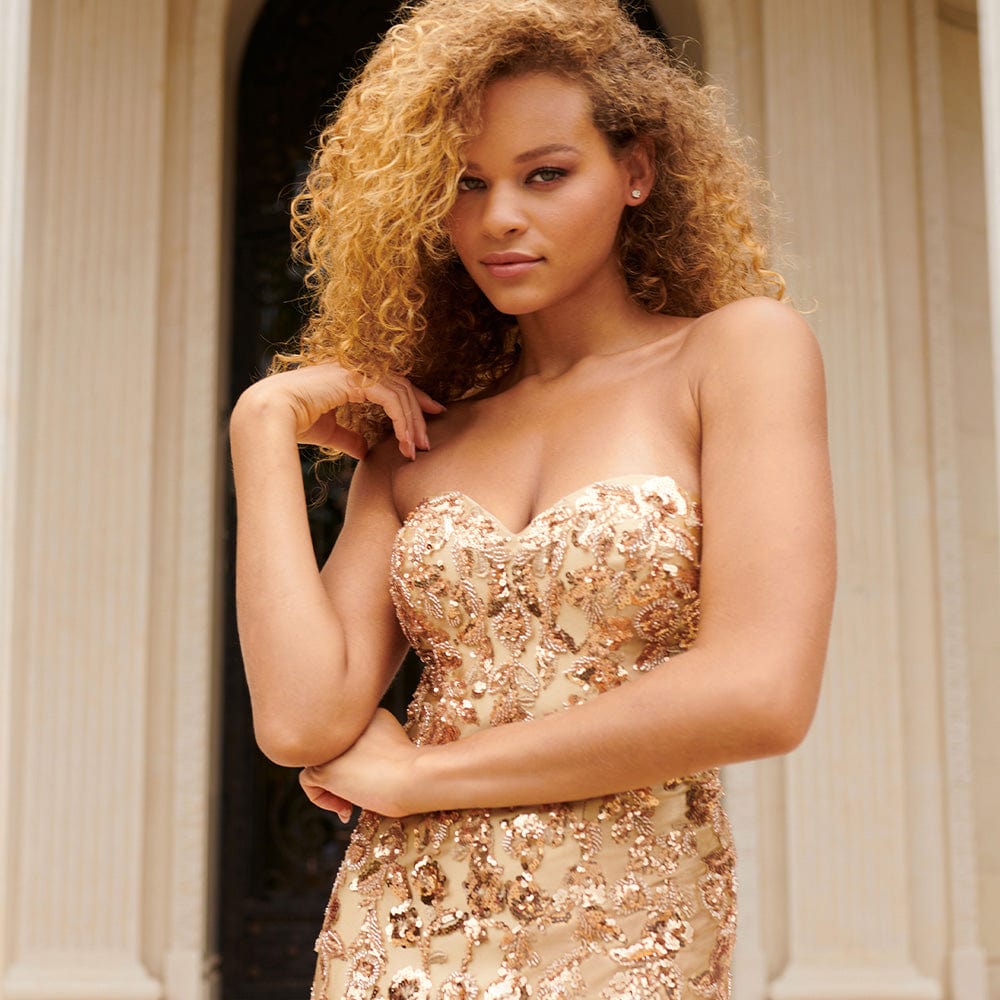
Choosing the Right Gold Dress for Your Body Type
Hourglass Figure
For individuals with an hourglass figure, the goal is to accentuate curves and maintain a balanced silhouette. A form-fitting gold dress that cinches at the waist can highlight natural curves beautifully. Styles such as mermaid or A-line cuts can help enhance this body type, making the wearer’s shape the focal point.
When selecting a gold dress, look for designs with strategic seams or ruching, which provide additional definition at the waist. Flattering neckline options, such as sweetheart or V-necklines, can add a touch of elegance while drawing attention to the décolletage.
Pear-Shaped Figure
Those with a pear-shaped figure may want to focus on defining the waist while emphasizing the upper body. A-line or fit-and-flare gold dresses are excellent choices for this body type. These styles skim over the hips while creating a structured top that balances proportions.
Consider selecting a gold dress with embellishments or details on the bodice, such as beading or lace, to draw attention upward. Off-the-shoulder or halter necklines can create a sophisticated look that highlights the shoulders and collarbone. Ensuring that the dress fits well at the waist and flows gracefully over the hips will result in a stunning appearance.

Popular Styles of Gold Formal Dresses
The Classic A-Line Dress
A-line dresses are celebrated for their flattering silhouette that suits many body types. This classic design features a fitted bodice that flows out gently from the waist, creating an elegant line. A-line gold dresses can work for various events, from a formal wedding to a charity gala.
The fabric choice can further enhance the aesthetic of an A-line dress. Luxurious materials like chiffon, satin, or silk drape beautifully, creating movement and flow. Opting for a gold dress with subtle embellishments or delicate details can add a touch of glamor without overwhelming the overall look.
The Strapless Gown
Strapless gowns are synonymous with high fashion and elegance. A strapless gold formal dress highlights the shoulders and collarbone, making it an ideal choice for formal occasions where a sophisticated silhouette is desired. These dresses often incorporate structured bodices, ensuring a comfortable fit while allowing freedom of movement.
Pursuing a strapless gown with a long train or full skirt can bring drama to your attire. Consider embellishments like sequins, lace detailing, or embroidery to add texture and depth to a gold strapless gown. Pair it with statement jewelry or an elegant clutch to complete the stunning look.
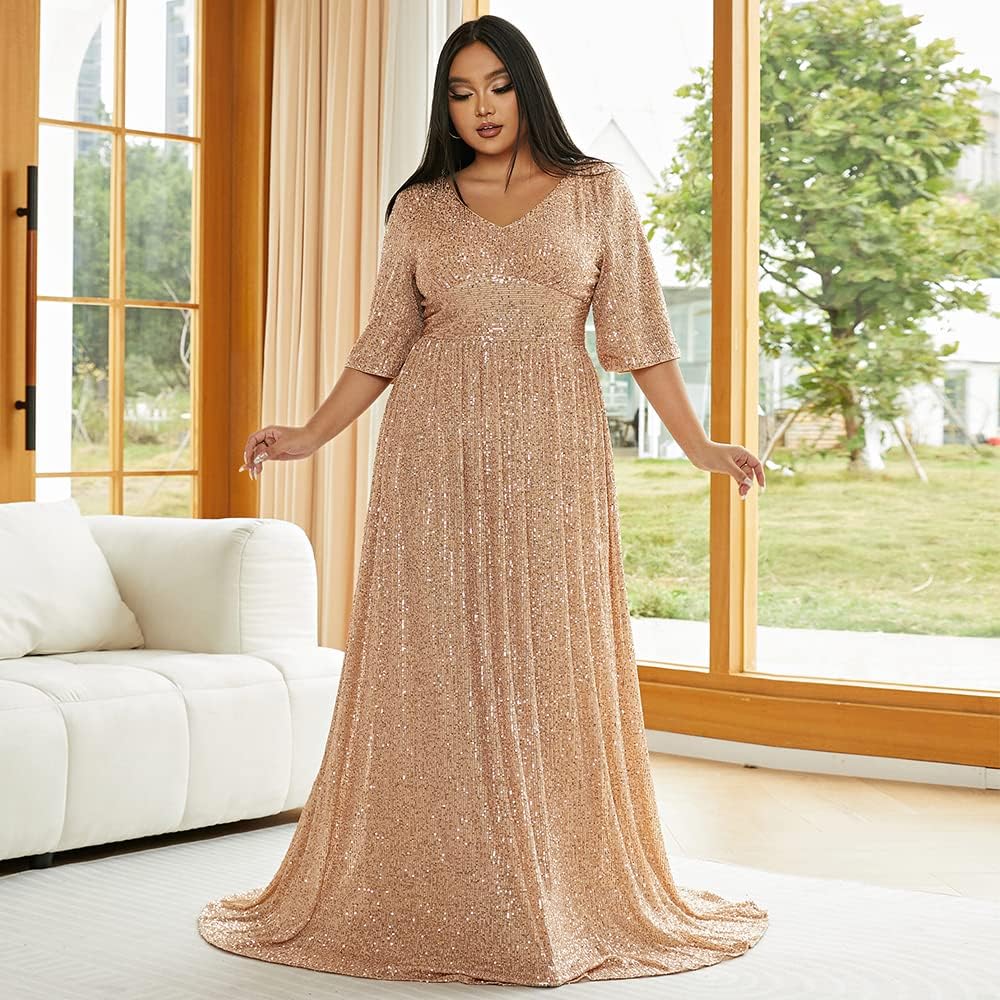
Accessorizing Your Gold Dress
Jewelry Choices
Accessorizing a gold formal dress requires a careful balance between complementing the dress while ensuring that you don’t overpower your look. Choosing the right jewelry pieces will enhance your outfit and showcase your personal style. Opt for statement earrings that draw attention without overshadowing the elegant color of the dress.
For neckline options, consider necklaces that align with the dress style. For instance, a plunging neckline may look stunning with a delicate pendant, while a higher neckline may allow for a statement piece to shine. Remember that when working with gold, mixing metals can also create a stylish statement, so incorporating silver or rose gold pieces can add depth to your ensemble.
Footwear and Handbags
When selecting footwear to complement a gold formal dress, prioritize comfort alongside style. Strappy heels, classic pumps, or elegant sandals can enhance the overall look and create a refined appearance. Neutral colors or metallic tones, such as silver or gold, will blend seamlessly with the dress, allowing it to take center stage.
Additionally, choose a handbag or clutch that matches the formality of your attire. Beading, sequins, or a complimenting material can elevate your outfit, while ensuring the bag remains functional for holding essentials. A stunning bag with sleek lines and an interesting texture can serve as a bold accessory that enhances your gold formal dress.
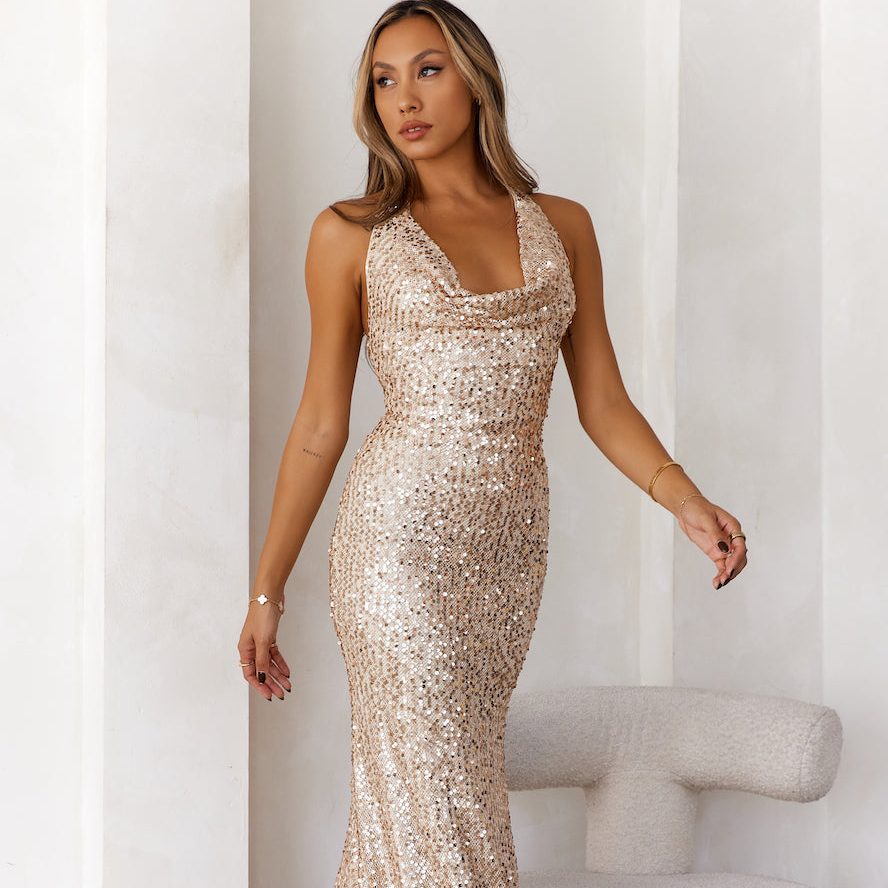
Hair and Makeup Tips for Gold Formal Attire
Hair Styles
Your hairstyle can dramatically impact your overall appearance when wearing a gold formal dress. Elegant updos, such as chignons or twisted buns, create a sophisticated look that pairs well with formal attire. These styles frame the face beautifully and allow you to showcase statement earrings or necklace pieces effectively.
If you prefer to wear your hair down, consider soft waves or a sleek, polished look. Loose waves evoke a romantic charm, while straight hair can create a modern, chic aesthetic. Whichever style you choose, make sure it complements the neckline and embellishments of your dress.
Makeup Choices
When deciding on makeup, consider the hues of gold and how they interact with your skin tone. Warm golden tones can beautifully complement a bronzed or warm complexion. Opting for a radiant glow, using highlighter and bronzer strategically, can mimic the shimmering nature of gold.
Eye makeup also plays a crucial role. Gold or bronze eyeshadows can enhance your eye color, while subtle eyeliner and mascara can make your eyes pop. For lips, soft nudes or classic reds work well, striking the right balance without overpowering the overall look. Ultimately, your makeup should enhance your features while allowing the gold formal dress to shine.
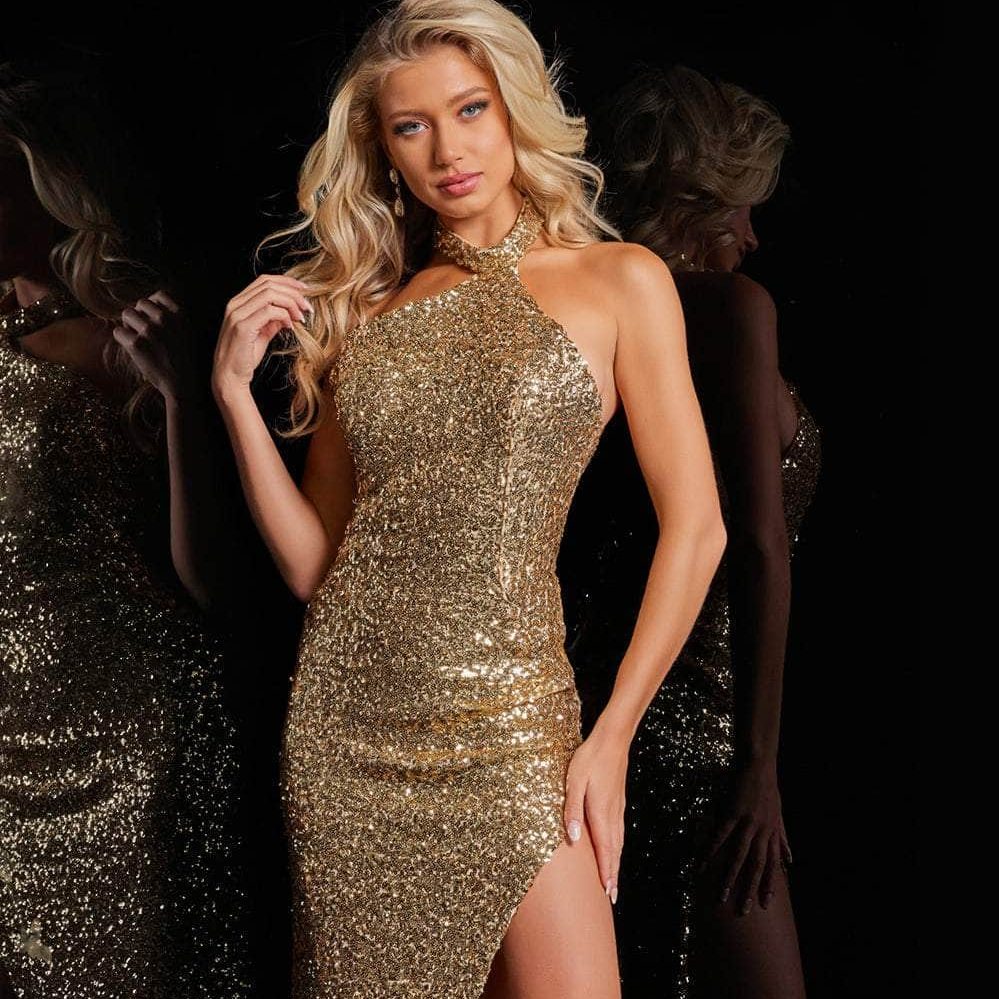
Taking Care of Your Gold Formal Dress
Cleaning Instructions
To maintain the beauty and condition of your gold formal dress, proper care is essential. Start by checking the care label for specific cleaning instructions, as fabrics can vary significantly. Many dresses made from delicate materials, such as silk or satin, may require dry cleaning to prevent damage.
If your dress is machine washable, use a gentle cycle with cold water and a mild detergent. However, avoid soaking or scrubbing too hard, as these actions can cause the fabric to lose its luster. Air-drying is often recommended over using a dryer, as heat can damage sensitive fabrics.
Storage Solutions
When it comes to storing your gold formal dress, consider investing in a quality garment bag to protect it from dust, light, and potential damage. Hang the dress rather than folding it to maintain its shape and avoid creases. For delicate fabrics, avoid using plastic hangers that could slip, opting instead for padded hangers.
Additionally, store your dress in a dark, cool place away from direct sunlight, which can cause fading or discoloration. Regularly checking on the garment and ensuring it retains its appearance will allow you to enjoy wearing it for many future events.
Shining Bright at Your Next Event
Confidence and Presence
Wearing a gold formal dress can empower you and elevate your presence at any event. The color gold itself exudes confidence, and when paired with the right fit and style, you will surely turn heads. The energy you bring to an event is often felt by those around you, making it essential to feel your best in your attire.
Don’t shy away from embracing this confidence; allow the elegance of a gold dress to enhance your self-assurance. Whether you dance, mingle, or enjoy a delightful conversation, your attire will help create a lasting impression. Knowing you look great in your chosen attire boosts your mood and encourages you to engage fully with others.
Create Your Own Style Statement
In conclusion, a gold formal dress is a versatile and stunning choice for your next elegant event. With the right features, accessories, and styling options, you can create a look that is both fashionable and uniquely yours. Embrace the allure of gold, and consider your body type, personal style, and comfort as you select your dress.
Dress with confidence and joy, knowing that you have chosen an ensemble that makes you shine bright. Prepare to make memorable connections and experience the thrill of attending an elegant event in a beautiful gold formal dress. Let every moment become an opportunity to celebrate your style, confidence, and elegance as you embrace the enchanting world of formal attire!
